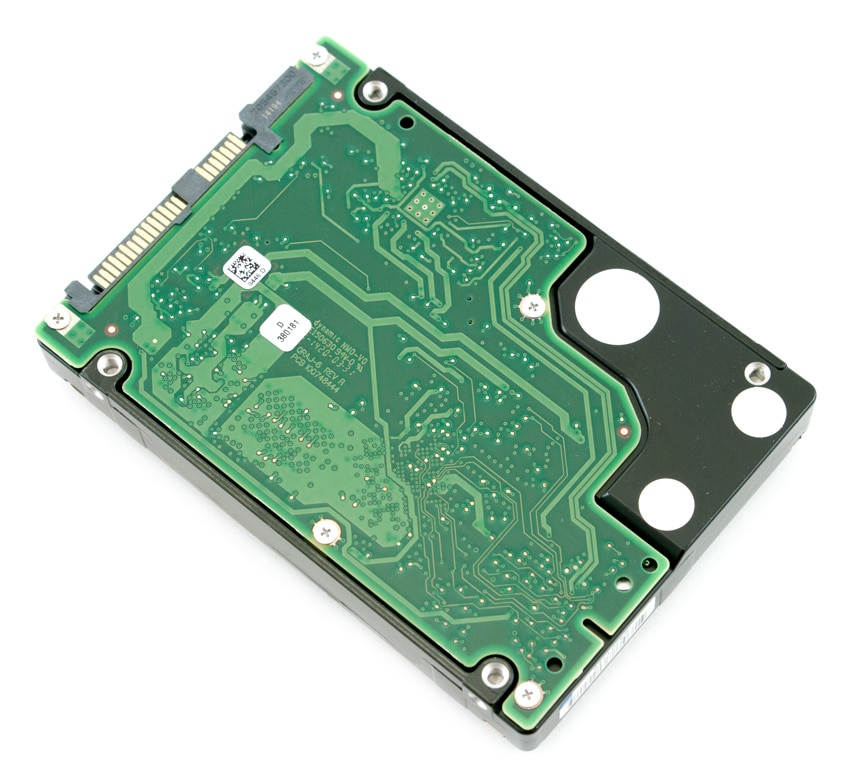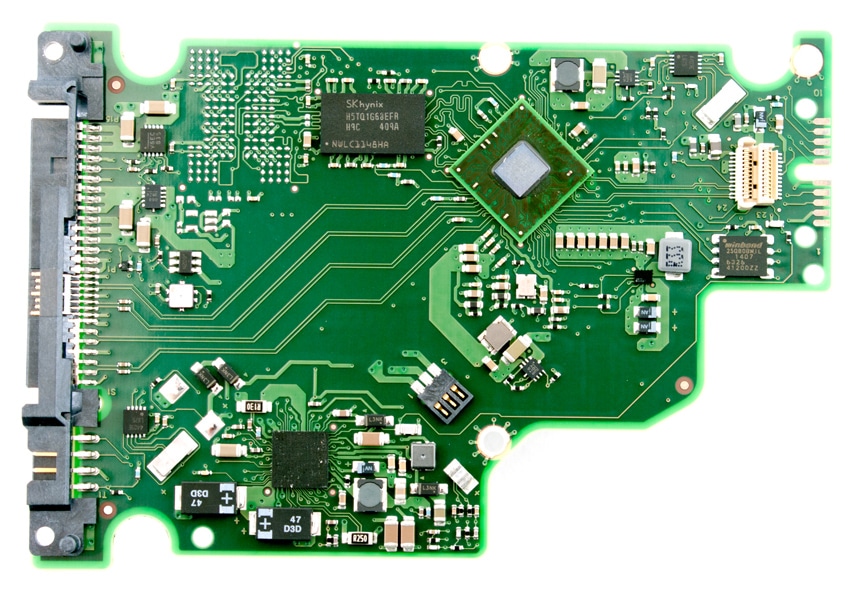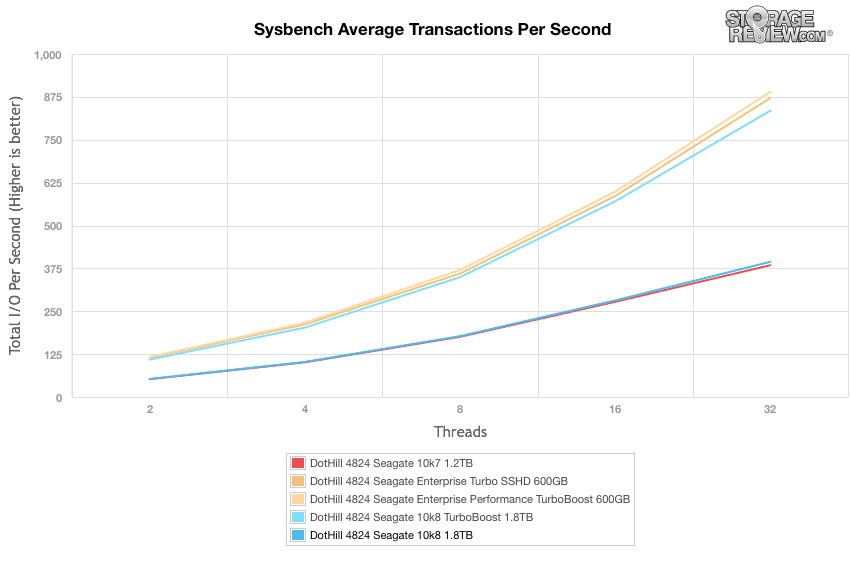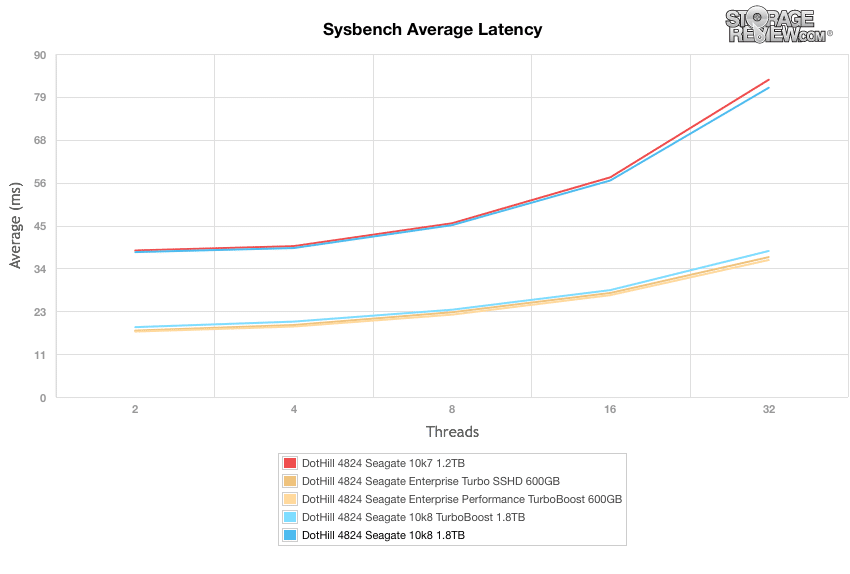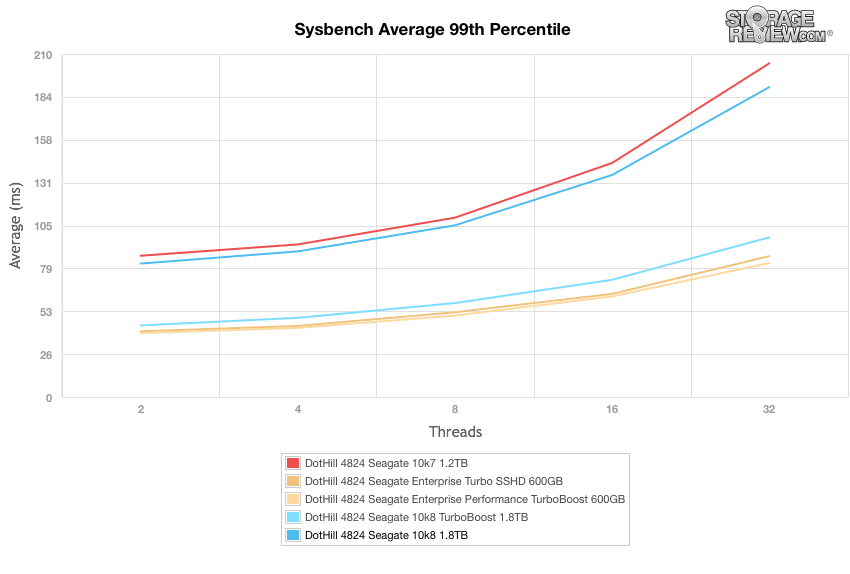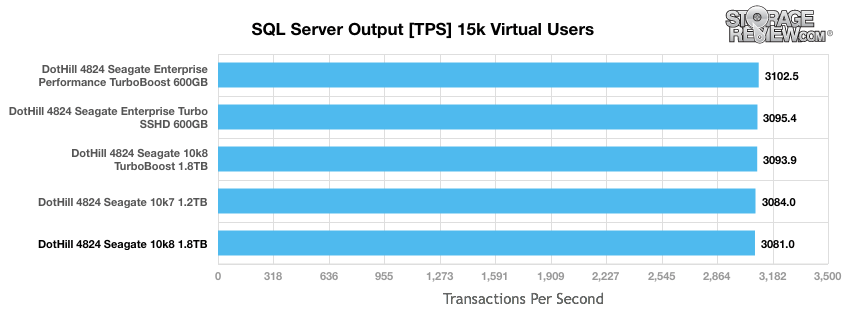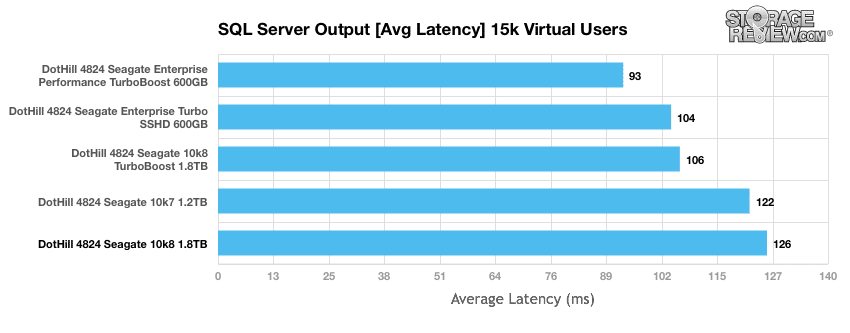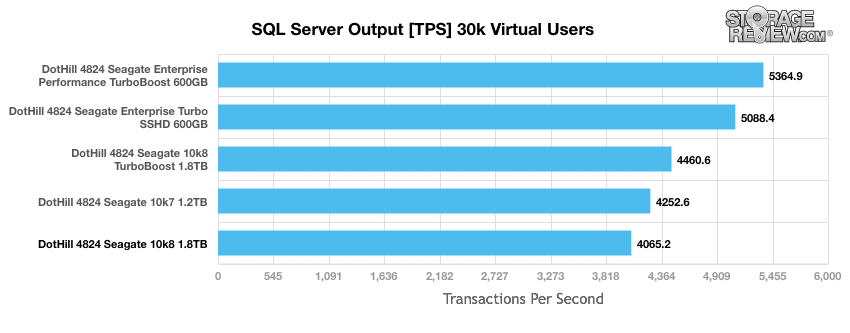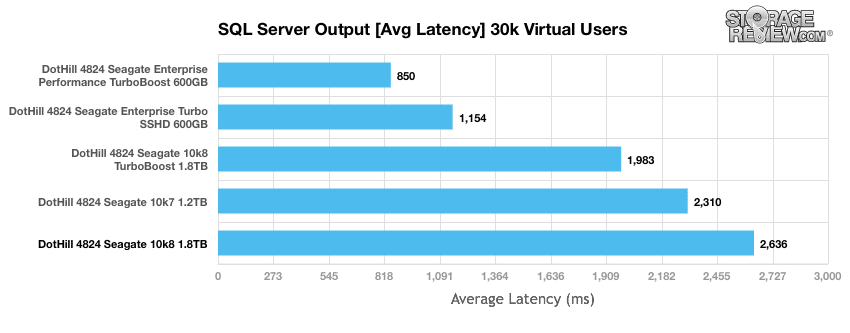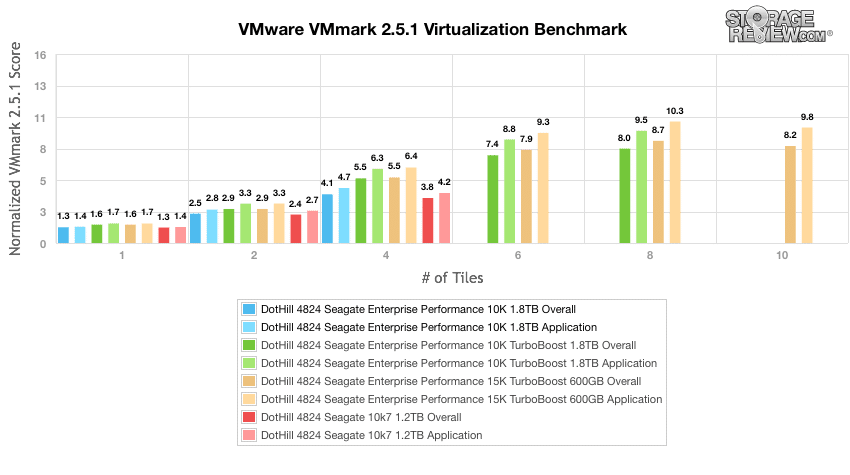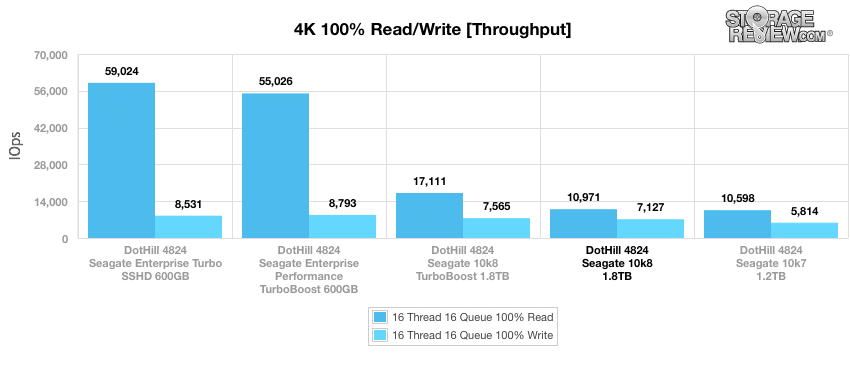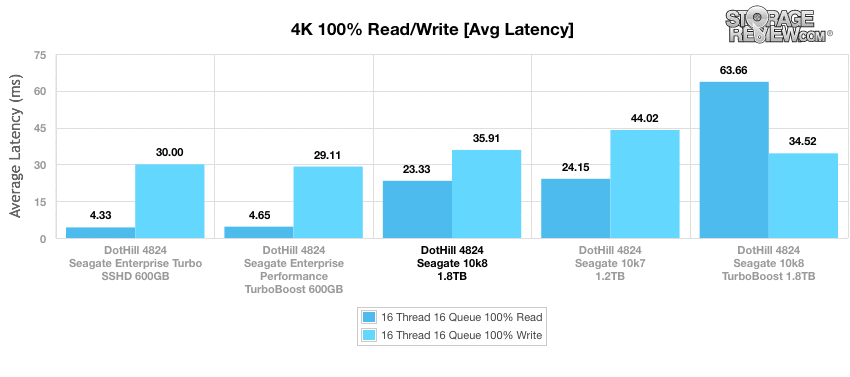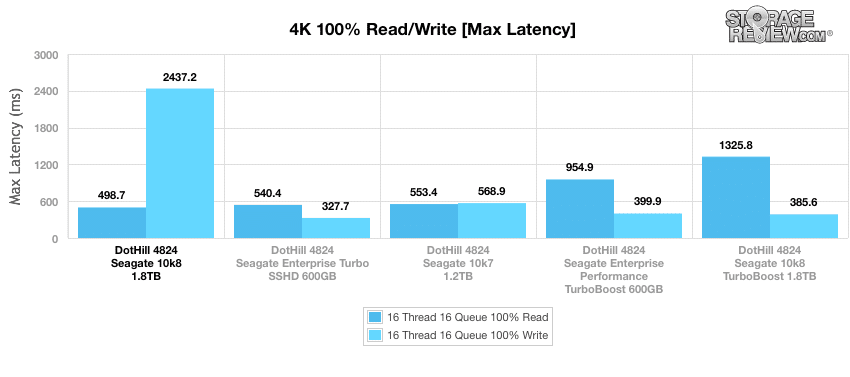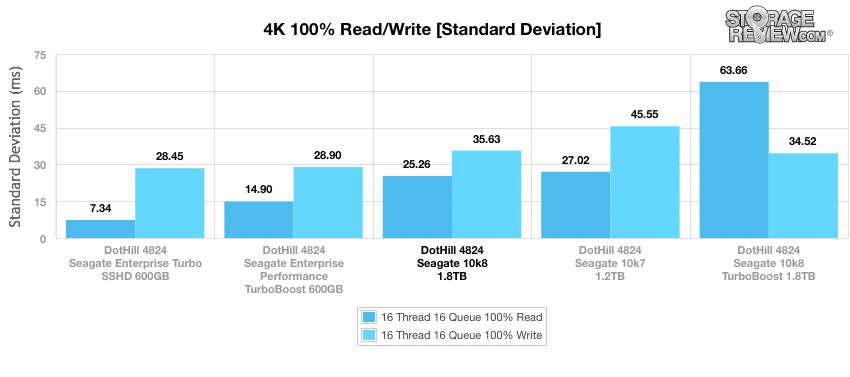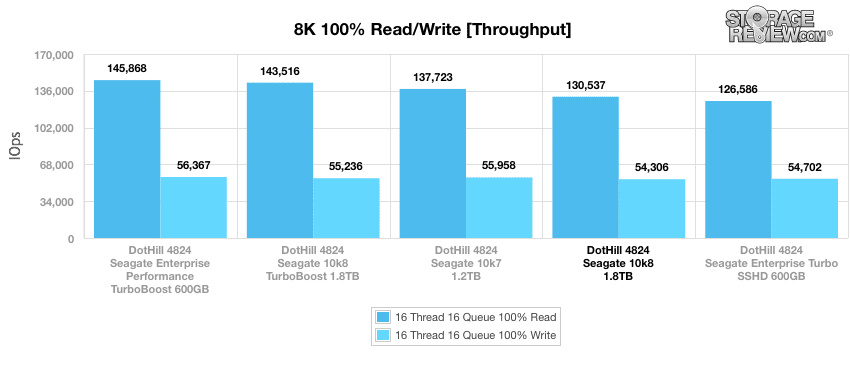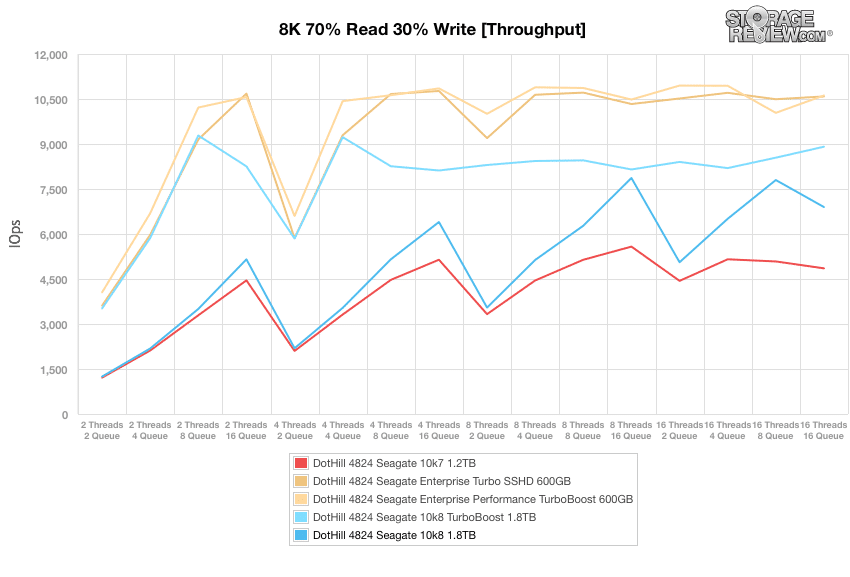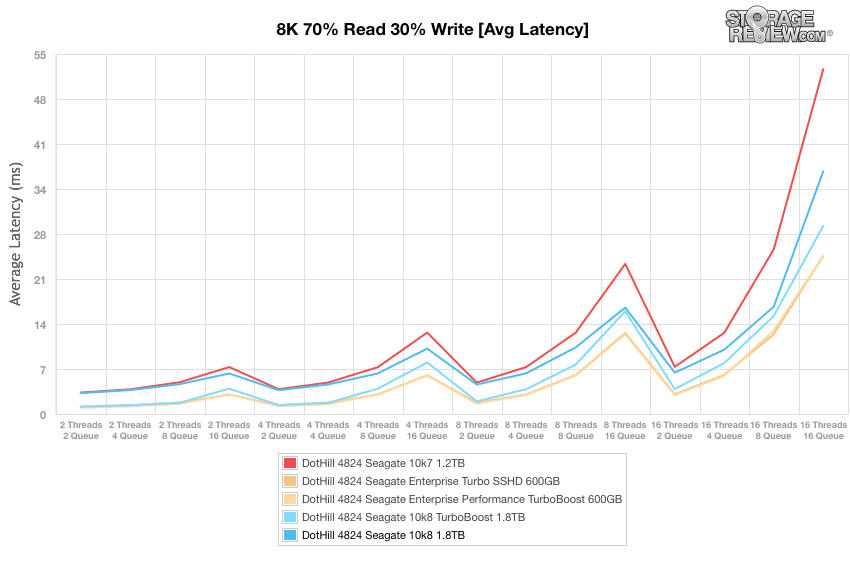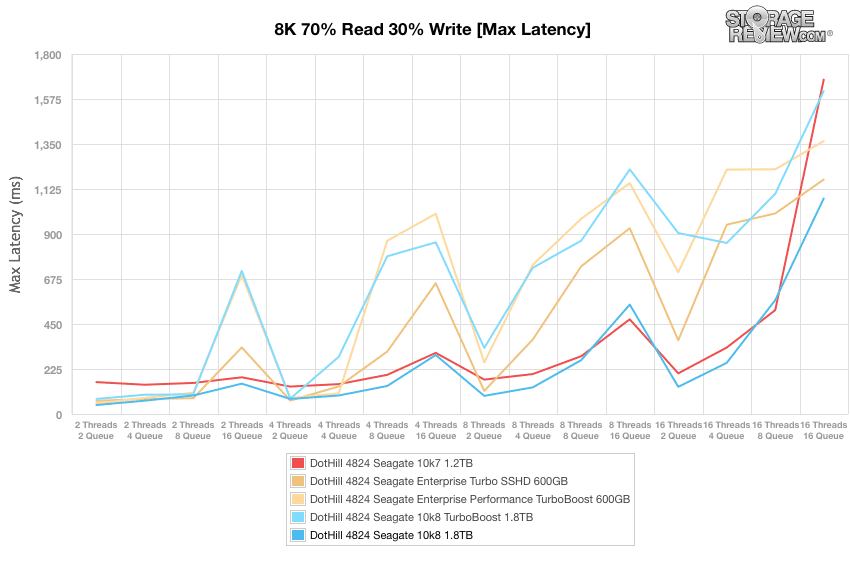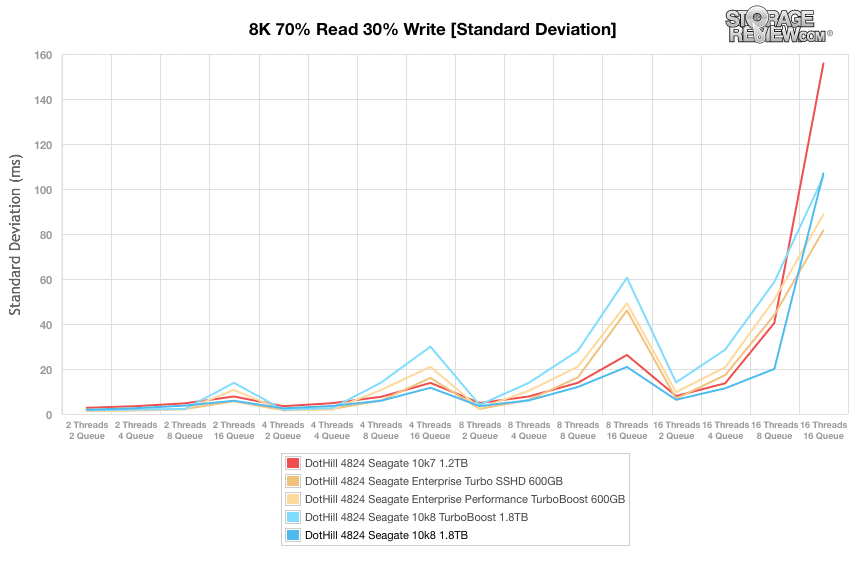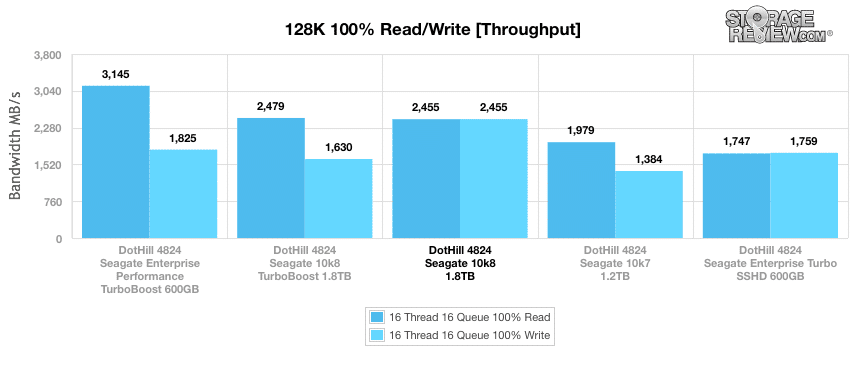
The 8th generation Seagate Enterprise Performance 10K 2.5" HDD allows data centers to keep up with the rapid growth in data all the while offering low power consumption. The 10k.8 drives are optimized for write-intensive applications such as mission-critical servers, external storage arrays and power- and space-constrained data centers as well as with enterprises with compliance or data security initiatives or those looking to migrate from a 3.5-inch drive form factor system to the 2.5inch next-gen technology. In addition, Seagate offers a TurboBoost model, which helps to accelerate I/O operations and to optimize response times in order to complete additional transactions at a faster rate. The Seagate Performance 10K.8 comes in capacities up to 1.8TB, and while it is more than the previous 10k.7 version and triple the storage pool of the 15K version, it still is much lower than most other enterprise drives out there. That being said, the Seagate Enterprise Performance line of HDDs certainly offers higher performance than the company's previously released hybrid drives.
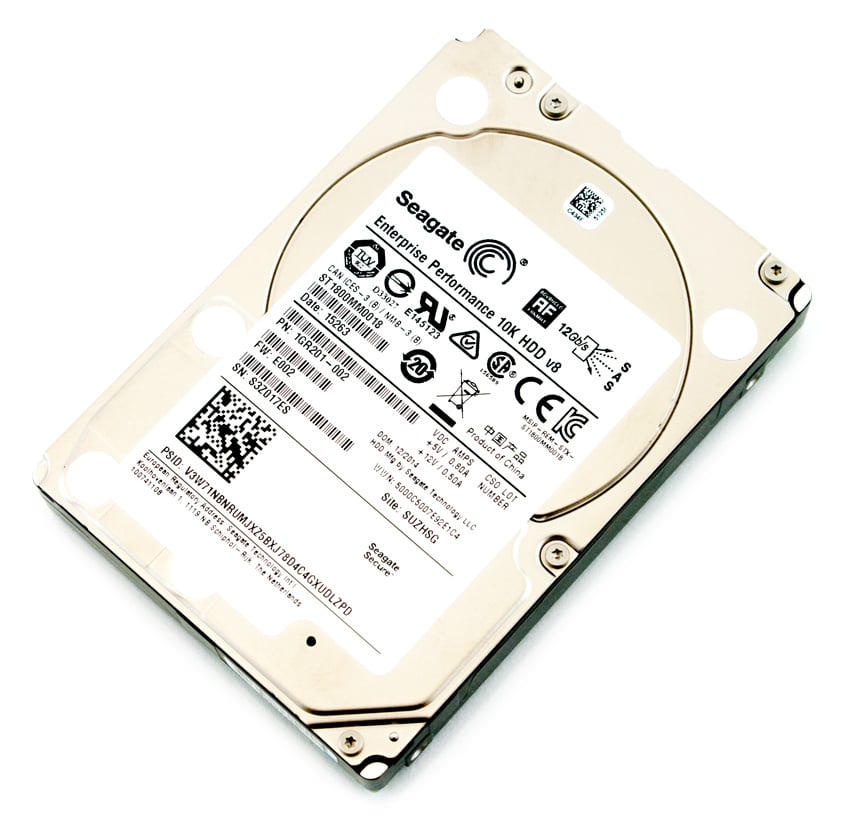
Under the hood, the Seagate Enterprise Performance 10K.8 is equipped with 128MB multisegmented cache for increased read and write performance. The drive is also host to a ton of power efficiency and reliability features including Seagate's PowerChoice technology with T10-compliant power management, which allows IT organizations to design their company with optimized power consumption. With PowerChoice, users can configure the drive’s power-saving settings for performance and power consumption through mode pages (SAS/FC) or Set Features commands (SATA). In addition, the drive's advanced media management functionality helps to increase drive reliability and data integrity by protecting against unexpected data change or loss. The Enterprise Performance 10K also features the Seagate RAID Rebuild technology to make RAID recovery faster and safer. It accomplishes this by extracting as much data as possible from the failed drive and then initiating RAID recovery, which is much faster than attempting to rebuild data from existing drives.
The Seagate Enterprise Performance 10K is available now and is backed by a 5-year warranty.
Seagate Enterprise Performance 10K Specifications
- Model: ST1800MM0018
- Spindle Speed (RPM): 10K
- Average Latency (ms): 2.9
- Sustained Transfer Rate (Outer to Inner Diameter, MB/s): 241 to 117
- Cache, Multi-segmented (MB): 128
- Configuration/Reliability
- Disks: 4
- Heads: 8
- External Transfer Rate (MB/s): 1,200
- Non-recoverable Read Errors per Bits Read: 1 per 10E16
- Annualized Failure Rate (AFR): 0.44%
- Power Management
- Typical Op (A) +5V/+12V: 0.44/0.47
- Typical Operating (W): 7.8
- Power Idle (W): 4.55
- Performance Efficiency Index (Idle W/GB): 0.0025
- Temperature, Operating (°C): 5 to 55
- Temperature, Non-operating (°C): –40 to 70
- Shock, Operating: 11ms (Gs): 40
- Shock, Non-operating: 2ms (Gs): 400
- Acoustics Idle (bels—sound power): 3.1
- Vibration, Operating: <500Hz (Gs): 0.5
- Vibration, Non-operating: <500Hz (Gs): 3
- Physical
- Height (in/mm, max): 0.591/15.00
- Width (in/mm, max): 2.760/70.10
- Weight (lb/kg): 0.439/0.199
- Carton Unit Quantity: 30
- Cartons per Pallet: 50
- Cartons per Layer: 10
- Limited Warranty: 5-years
Design and build
The Seagate Enterprise Performance 10k HDD is of a 2.5" form factor and a height of 15mm. The look of the drive itself is virtually identical to the rest of the Enterprise Performance line, using just a simple black and white sticker. The front side of the 10K drive displays product information label with the related specifications including capacity and interface.
Like most drives, both sides and the bottom of Enterprise Performance 10K8 have four screw holes for easy mounting. The drive features the traditional SAS interface.
The drive’s circuit board is held on by six flat head torx screws. Once removed, you will see the Avago-chipset, which is the Enterprise Performance 10K’s primary controller. In addition, a Hynix DRAM package is also visible.
Testing Background and Comparables
We will be comparing the Seagate Enterprise Performance 10k with the following drives for this review:
- Seagate Enterprise Performance TurboBoost
- Seagate Enterprise Performance 10k7 (7th generation)
- Seagate Enterprise Performance 10k8 (8th generation) TurboBoost
- Seagate Enterprise Turbo SSHD 15K HDD 600GB
For this review, we looked at both the 7th and 8th generation of drives, denoted as 10k7 and 10k8 in our charts, respectively. We will be testing the drives on the Dot Hill AssuredSAN 4824.
Application Performance Analysis
In the enterprise market, there is a huge difference between how products claim to perform on paper and how they perform in a live production environment. We understand the importance of evaluating storage as a component of larger systems, most importantly how responsive storage is when interacting with key enterprise applications. To this end, we've rolled out application tests including our proprietary MySQL performance via SysBench, SQL Server performance via Benchmark Factory as well as VMmark virtualization performance by VMware.
The Percona MySQL database test via SysBench application test measures the performance of OLTP activity. In this testing configuration, we use a group of Lenovo ThinkServer RD630s and load a database environment onto a single SATA, SAS or PCIe drive or a group of HDDs using an LSI 9286-8e RAID card. This test measures average TPS (Transactions Per Second), average latency, as well as average 99th percentile latency over a range of 2 to 32 threads. Percona and MariaDB are using the Fusion-io flash-aware application APIs in the most recent releases of their databases, although for the purposes of this comparison we test each device in their "legacy" block-storage modes.
During our average transactions per second benchmark, the Seagate Enterprise Performance 10k8 HDD started well below its TurboBoost brethren finishing with 394.29 TPS, narrowly edging out the 10k7 throughout the test.
Moving on to average latency in our Sysbench MySQL test showed much of the same, with the 10k8 ending up with a relatively high 81.16ms by the 32QD and again narrowly beating out the 10k7. The TurboBoost version performed very well, staying neck-and-neck with the top of the leaderboard throughout the benchmark.
Looking at our worst-case MySQL latency scenario (99th percentile latency), the 10k8 showed weak performance once again with a latency of 189.77ms by the end of the benchmark.
Our next database test covers performance in Microsoft's SQL Server environment that leverages a 685GB (3,000 scale) SQL Server database and measures the transactional performance and latency with a 30,000 VU Load. We also include results from a smaller 333GB (1,500 scale) SQL Server database to better size the cache to the workload.
In our smaller database size, the 10k8 came in at the bottom of the pack in transactions per second with a score of 3081.0 TPS, though the disparity between the drives wasn't substantial.
Looking at average latency of the same database size, results were more of the same, with the Seagate 10k8 boasting 126ms at the bottom of the pack.
Moving on to the larger database size, the Seagate 10k8 drive recorded 4,065.2 TPS, which was noticeably lower than the 10k7. The top performer here was unsurprisingly the Performance TurboBoost 600GB drive, touting 5,364.9 TPS.
Looking at average latency of the same database size shows the Seagate 10k8 drive with 2,636ms, placing it at the bottom of the pack again. The top performer here was the Seagate TurboBoost 600GB HDD with an average latency of 850ms.
Our VMmark protocol utilizes an array of sub-tests based on common virtualization workloads and administrative tasks with results measured using a tile-based unit that corresponds to the ability of the system to perform a variety of virtual workloads such as cloning and deploying of VMs, automatic VM load balancing across a datacenter, VM live migration (vMotion) and dynamic datastore relocation (storage vMotion).
Comparing the normalized VMmark 2.5.1 performance, the Seagate 10k was able to extend up to only 4 tiles, while the TurboBoost model topped out at 8-tiles. The only drive to reach the 10-tile mark was the Seagate 15K TurboBoost drive.
Enterprise Synthetic Workload Analysis
Prior to initiating each of the fio synthetic benchmarks, our lab preconditions the device into steady-state under a heavy load of 16 threads with an outstanding queue of 16 per thread. Then the storage is tested in set intervals with multiple thread/queue depth profiles to show performance under light and heavy usage.Preconditioning and Primary Steady-State Tests:
- Throughput (Read+Write IOPS Aggregate)
- Average Latency (Read+Write Latency Averaged Together)
- Max Latency (Peak Read or Write Latency)
- Latency Standard Deviation (Read+Write Standard Deviation Averaged Together)
Our condensed Enterprise Synthetic Workload Analysis includes one profiles designed to show peak random I/O from each device. This profile is designed to be used as a baseline comparable to cross-reference manufacturer claims of random transfer speeds.
- 4k
- 100% Read or 100% Write
- 100% 4k
- 8k (Sequential)
- 100% Read or 100% Write
- 100% 8k
- 8K 70/30
- 70% Read, 30% Write
- 100% 8K
- 128K (Sequential)
- 100% Read or 100% Write
- 100% 128K
In our 100% 4K random read and write test, the Seagate 10k8 posted 10,971 IOPS read and 7,127 write, while the TurboBoost model had a read performance of 17,111 IOPS and 7,565 IOPS for writes . The SSHD clearly has the performance advantage with its superior spindle speed, taking the top spot.
When looking at average latency, the Seagate 10k8 showed a massive improvement with reads at 23.33ms and writes at 35.91ms compared to the TurboBoost model, which had 63.66ms read and 34.52ms write.
Moving to max latency, the Seagate 10k8 actually took top spot by a noticeable margin, beating out the Turbo SSHD by roughly 42ms. That said, the drive had the worst write highest (2,437ms) by a significant margin.
Standard deviation showed performance results very similar to average latency, with the Seagate 10k8 drive closely trailing the leaders. Here, it posted 25.26ms read and 35.63ms write.
Our next benchmark puts the drives under 100% read/write activity once again; however, this time we will be using 8K sequential throughput. That being said, the 10k8 performed fairly well with read performance of 130,537 IOPS and a write performance of 54,306 IOPS.
Compared to the fixed 16 thread, 16 queue max workload we performed in the 100% 4k write test, our mixed workload profiles scale the performance across a wide range of thread/queue combinations. During these tests, we span workload intensity from 2 threads and 2 queue up to 16 threads and 16 queue. In our throughput scenario, the Seagate 10k8 drive ran fairly close with the 10k7 drive, though it separated itself significantly by the 16T/16Q. OVerall, the drive showed inconsistent results (peaking at 7,867 IOPS at 8T/16Q), which placed it near the bottom of the pack.
In our average latency benchmark, the Seagate 10k8 started off neck and neck with the 10k7 drive for most of the test only to separate itself by the 16T/2Q. The Seagate Turbo SSHD and Performance TurboBoost models showed the best results.
Looking at max latency, the majority of the drives posted inconsistent results all over the board. The Seagate 10k8 drive actually showed the best performance, with a max latency of only 1078.01ms by the terminal queue depths.
Our standard deviation benchmark showed the 10k8 posted excellent initial results up until the very end of our tests where it ended up placing near the bottom of the pack with 107.02ms.
Our Enterprise Synthetic Workload 128K test is a large block sequential test that shows the highest sequential transfer speed for a platter drive. When looking at 128K performance of 100% write and 100% read activity, the Seagate 10k8 showed decent results with identical read and write speeds of 2,455MB/s.
Conclusion
The Seagate Enterprise Performance 10k HDD is a 2.5” HDD that uses a 12Gb/s SAS interface. The drive also comes in various types of models including one with TurboBoost, adding 32GB eMLC NAND as well as a 128GB cache to help accelerate I/O operations and optimize response times for faster transactions. The 10k drives are designed for use cases such as write-intensive applications including mission-critical servers, external storage arrays and power- and space-constrained data centers. The Seagate 10k standard model line comes in capacities of 600GB, 900GB, 1.2TB, and 1.8TB capacities inclusive of a 5-year warranty.
Looking at performance, the 8th generation Seagate 10k HDD showed results all over the board throughout our tests; however, it generally went as expected. In our application workloads, the 10k HDDs without TurboBoost showed a much slower performance than the 15k HDDS, placing our review model at the bottom of the pack in each of our categories. For example, when testing the drive with Microsoft's SQL Server environment using a larger database size, the 10k 8th-gen drive recorded 4,065.2 TPS, which was noticeably lower than the 10k7. In our 4K 100% read/write synthetic workloads, the Seagate 10kv8 drive boasted excellent average and max latency performance, the latter which placed the drive at the top of the leaderboard in read activity (though it placed last by a significant margin in writes). During our 8k 100% read/write throughput benchmark, the 10kv8 drive ranked towards the bottom of the pack in both read and write columns with throughput performance of 130,537 IOPS and 54,306 IOPS, respectively. When looking at the large block performance test, however, the Seagate 10k drive showed much better results, boasting identical read and write speeds of 2.5GB/s.
It’s quite clear from the above results that the TurboBoost model does indeed provide a significant boost in performance in most of our tested workloads and can even be compared to economical consumer SSDs. That being said, though the non-turbo 8th generation model that we tested is certainly not as performance-driven, it does offer decent performance for its market segment as well as a noticeable upgrade compared to the previous 7th generation of the 10k Enterprise Performance line.
Pros
- Great max latency results and a decent performance gain over previous generation
- Small 2.5” form factor with SAS interface
- High capacity for its class
Cons
- 1.8TB is still not a big enough leap in capacity from the 7th generation
- Somewhat mixed performance results
Bottom Line
The Seagate Enterprise Performance 10k.8 HDD offers a minor boost in capacity to the company's 10K RPM, 2.5" HDD portfolio and a significant performance improvement over its previous generation.
Seagate Enterprise Performance 10K at Amazon

